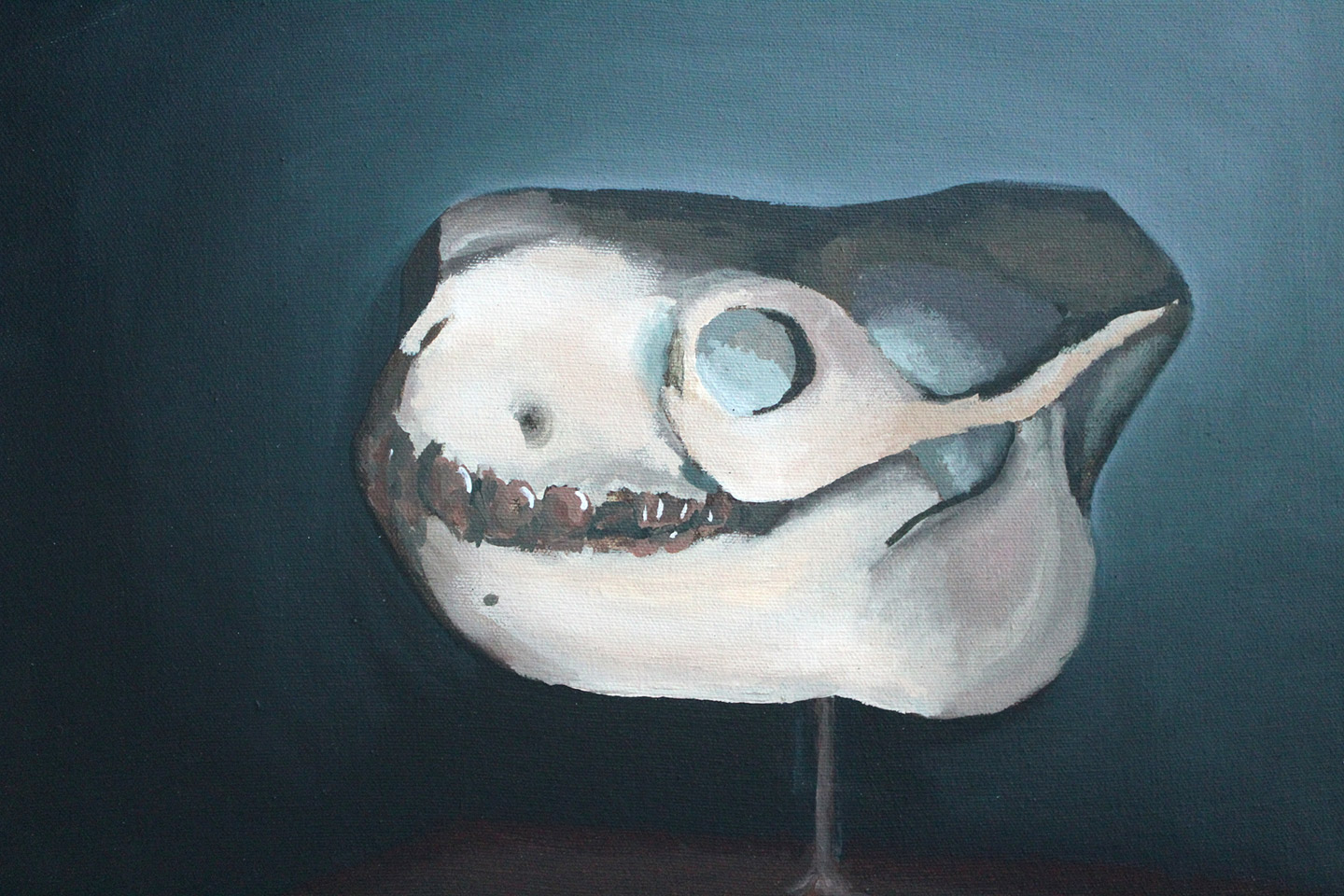Natural Curiosities
Quentin Brendel
VIEW THE EXHIBITION Ι 8/22 - 9/4.2020
Swift Gallery ι Breidenstine Hall (3rd Floor)
Reception ι 10/8.2020 from 12:00 - 1:00 pm
Artist Talk ι 12:15 pm
COVID-19 Safety Protocol ι Due to Covid-19, we are required to limit the capacity of Swift Gallery to 18 occupants at a time. Reservations are required in order to stay within capacity. Please email the artist at qtbrende@millersville.edu to RSVP. Thank you for your cooperation.
Gallery Hours ι Standard business hours for Swift Gallery are Monday - Friday from 8:00 am - 4:00 pm. Hours are subject to vary in accordance with University established holidays (below) and the reception, gallery talk/s or awards ceremony.
About the Exhibition ...
 Quentin Brendel is currently earning his BFA in painting, and much of his work is also sculptural. He has always been interested in animals and nature and his work often explores themes of natural history. He is from the town of Manheim, Pennsylvania, where he currently resides and creates his artwork. His body of work is often driven by nostalgia and personal experiences including zoo or museum visits. Additionally, a large portion of his work stems from his fossil and toy animal collecting.
Quentin Brendel is currently earning his BFA in painting, and much of his work is also sculptural. He has always been interested in animals and nature and his work often explores themes of natural history. He is from the town of Manheim, Pennsylvania, where he currently resides and creates his artwork. His body of work is often driven by nostalgia and personal experiences including zoo or museum visits. Additionally, a large portion of his work stems from his fossil and toy animal collecting.
About the Artist ...
Natural Curiosities is a collection of artwork made by Quentin Brendel throughout his time at Millersville University. Quentin originally began sculpting models and figurines as an extension of his affinity for toy animals through childhood to the present. His sculptures are all researched and accurate to how these animals may have looked in life. His paintings explore their subjects more freely, while still keeping to a similar level of authenticity.
The BFA exhibit features a variety of pieces that are influenced by the contents of natural history museums, especially exhibits from the twentieth century. These somewhat outdated exhibits may often be overlooked, but they represent the history of the field of natural sciences. Being a Lancaster County local, Quentin included fossils that have been found in this area and were prevalent in museums he has visited, such as those of the Smithsonian Institution, or Lancaster's own North Museum. Much of the work presented here is illustrative or documentary, keeping to facts and evidence that is known or was previously thought to be true.
-
University Holidays
Campus Closed
- New Year’s Day - observed 01/01 (Monday)
- Martin Luther King, Jr. Day - 01/15 (Monday)
- Memorial Day - 05/28 (Monday)
- Independence Day - 07/04 (Wednesday)
- Labor Day - 09/03/18 (Monday)
- Thanksgiving Day - 11/22 (Thursday)
- Day after Thanksgiving Day - 11/23 (Friday)
- Christmas Day - 12/25 (Tuesday)
- 12/26 (Wednesday) - 12/31 (Monday)
- New Year’s Day (2019) - 01/01/19 (Tuesday)
-
Directions & Parking
DIRECTIONS - GOOGLE MAPS
To the MU Police Station for a Parking Permit ... As you drive down N. George Street, on the right, you will see signage on a brick wall welcoming you to Millersville University. This is the intersection of N. George Street & W. Cottage Avenue. If you make a right, you will find the University Police Station . Please stop in to request a free daily parking pass from the attendant at the main desk. This parking pass will be valid for white lines spaces only.
To Swift Gallery ... As you proceed down George Street. On the left, you will see the Sugar Bowl which will put you on Normal Avenue. At this turn, you will see a campus street sign for "Breidenstine Hall" (Department of Art & Design). Stop at the first Stop Sign and proceed straight. You will pass Biemesderfer Stadium and Chryst Field on your left hand side. A little further on the right you will see a square brick building with teal and white placards with the words "Art & Design". This is Breidenstine Hall, your destination of 46 E. Frederick Street. Sykes Gallery will be on the ground level of this building. Please address the department secretary in room 101 for access to the entrance for handicap accessibility.To the Bus Parking Lot ... West Cottage Ave & North George St.
PARKING PERMITS
Daily campus parking permits are required before 4:00 pm and available at the campus Police Station in Lebanon House on 237 N. George St., Millersville, PA 17551. These permits will only be valid for white, not yellow lined spaces. The station is open from 8:00 am – 4:30 pm. (717) 871-4357. -
Contact Us ...

MILLERSVILLE UNIVERSITY
DEPARTMENT OF ART & DESIGN
Breidenstine Hall
46 East Frederick Street
Millersville, PA 17551Secretary ι Rose Tivoli
Main Office ι Room 101 - Ground Level
Hours ι Monday-Friday (8:00 am - 4:00 pm)
Email ι rose.tivoli@millersville.edu
Phone ι 717.871.7249
Fax ι 717.871.7929